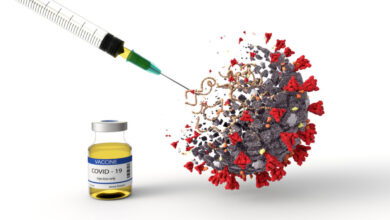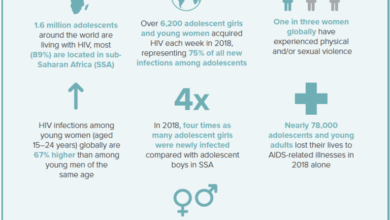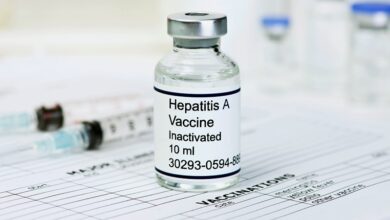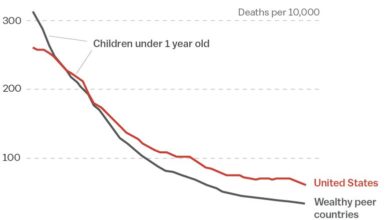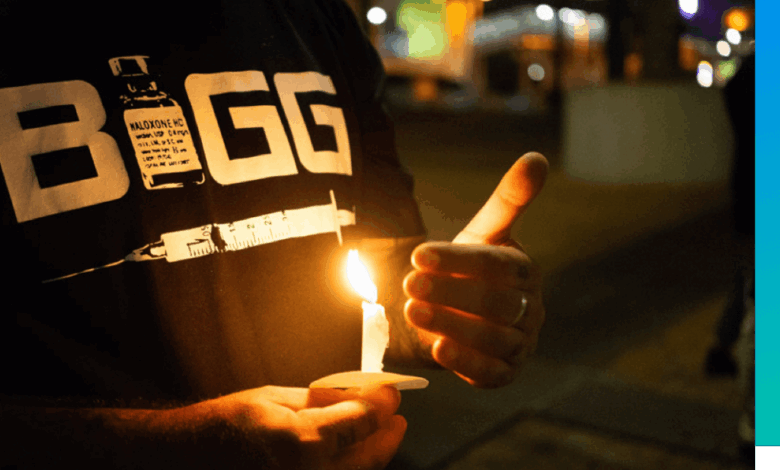
Should we save people who overdose drugs? This complex question probes deep into ethical dilemmas, public health implications, and practical considerations. The potential for saving lives is undeniable, but the long-term consequences and ethical frameworks must be carefully weighed. Beyond the immediate act of rescue, a multitude of factors come into play, from individual responsibility to societal obligations, and from the potential for a reduction in overdose deaths to the potential for unintended consequences on substance use behaviors.
This exploration delves into the multifaceted nature of this critical issue, considering the ethical principles involved, the impact on public health, the practical challenges of implementation, individual perspectives, resource allocation, and the nuanced influence of cultural and societal factors. It’s a crucial conversation demanding careful consideration and balanced perspectives.
Ethical Considerations
The decision to intervene in a drug overdose presents a complex web of ethical dilemmas, forcing us to confront fundamental questions about individual responsibility, societal obligation, and the very nature of our moral obligations. Weighing the potential benefits of saving a life against the potential harms and the complex moral implications requires careful consideration of various ethical frameworks. This examination explores the multifaceted ethical landscape surrounding drug overdose rescue.
Ethical Dilemmas Surrounding Drug Overdose Rescue
The act of intervening in a drug overdose is fraught with ethical complexities. It necessitates a careful balancing act between respecting individual autonomy and acknowledging the potential societal ramifications. The dilemma often hinges on the question of whether our duty extends to intervening in situations where individuals have demonstrably placed themselves at risk, or if our role should be limited to providing support and resources.
Individual Responsibility Versus Societal Obligation
The debate regarding intervention in drug overdose cases often centers on the tension between individual responsibility and societal obligation. Proponents of intervention argue that a society has a moral imperative to protect its members, even when those members have made choices that put them at risk. Conversely, some argue that individuals should bear full responsibility for their choices and that intervention may undermine personal accountability and create dependencies.
This discussion highlights the fundamental philosophical difference between individual liberty and the collective good.
Ethical Frameworks Applied to Drug Overdose Rescue
Different ethical frameworks offer varying perspectives on the issue of drug overdose rescue. Deontological ethics, emphasizing moral duties and rules, might argue for intervention based on a universal obligation to prevent harm. Consequentialist ethics, focusing on the outcomes of actions, might evaluate intervention based on whether the potential benefits of saving a life outweigh the potential risks and consequences.
Virtue ethics, emphasizing character traits and moral excellence, would consider the qualities of compassion, empathy, and responsibility in the decision-making process.
Comparison of Ethical Arguments for and Against Intervention
Arguments for intervention often center on the potential for saving lives and alleviating suffering. Conversely, arguments against intervention sometimes emphasize the potential for unintended consequences, including fostering dependence or undermining personal accountability. These differing viewpoints highlight the complexity of the issue, underscoring the necessity of a nuanced and empathetic approach.
Ethical Principles in Intervention and Public Welfare
| Ethical Principle | Argument for Intervention | Argument Against Intervention |
|---|---|---|
| Autonomy | Respecting autonomy doesn’t preclude intervention in situations where the individual is incapacitated or unable to make rational decisions. | Intervention may violate the individual’s autonomy if they are capable of making informed decisions, even if those decisions are risky. |
| Beneficence | Intervention aims to benefit the individual by saving their life and preventing harm. | Intervention may not always be beneficial if it creates unintended negative consequences or perpetuates a cycle of dependence. |
| Non-Maleficence | Intervention aims to prevent harm by saving a life. | Intervention may lead to unintended harm if the individual is not willing or prepared for the support that follows. |
| Justice | Intervention should be provided equitably, regardless of socioeconomic status or background. | Resources allocated to intervention might be better used in preventative measures or harm reduction strategies. |
Public Health Implications
Drug overdose rescue programs, while ethically complex, hold significant potential for improving public health outcomes. These programs aim to save lives and, importantly, address the broader systemic issues contributing to drug-related deaths. By providing immediate intervention and connecting individuals with treatment resources, these programs can have a profound impact on the overall health of communities.The implications extend beyond the immediate crisis response, touching upon long-term prevention strategies and influencing the attitudes and behaviors of individuals struggling with substance use disorders.
Understanding these multifaceted effects is crucial for crafting effective and sustainable programs.
Impact on Mortality Rate
Drug overdose rescue programs demonstrably reduce mortality rates associated with drug overdoses. By providing timely intervention, including administering naloxone, these programs can reverse opioid overdoses and increase the chances of survival. The immediate life-saving aspect is a crucial component of the overall public health strategy. Examples include programs in major metropolitan areas that have shown significant reductions in overdose deaths following the implementation of comprehensive rescue protocols.
Impact on Substance Use Rates
These programs can potentially influence substance use rates, although the exact nature of the influence is complex and requires further study. By providing access to treatment and support services, rescue programs may create a more supportive environment for individuals to address their substance use disorders. This is a long-term effect that often manifests in reduced recidivism and improved long-term outcomes.
Potential Long-Term Consequences of Widespread Rescue Efforts
Widespread rescue efforts may have unintended long-term consequences. While the immediate goal is to save lives, the potential for a desensitization effect on users and their families needs consideration. It’s essential to maintain a balance between providing critical life-saving interventions and fostering a culture of accountability and support for recovery. One example is the possibility of a decreased perception of the severity of drug use if rescue efforts are perceived as a constant safety net, potentially discouraging individuals from seeking long-term solutions.
Accessibility of Programs
The accessibility of overdose rescue programs is a crucial factor in their effectiveness. Programs that are readily available and easily accessible, especially in areas with high overdose rates, are more likely to have a positive impact on mortality rates. This includes factors such as location, hours of operation, and ease of access to resources. A program’s success is directly tied to how readily available it is to those who need it.
Training of Program Personnel
Comprehensive training for program personnel is essential for maximizing the effectiveness of overdose rescue programs. Well-trained personnel can recognize the signs of an overdose, administer naloxone safely, and provide appropriate support to the individual and their family. Such training equips personnel to act decisively and effectively in crisis situations, ultimately increasing the likelihood of positive outcomes.
Community Engagement
Effective community engagement is vital for the long-term success of overdose rescue programs. Programs that actively involve community members, organizations, and local authorities are more likely to create a supportive environment for individuals struggling with substance use disorders. By fostering collaboration and trust within the community, programs can create a more proactive approach to preventing overdoses and promoting recovery.
| Program Feature | Impact on Mortality Rate | Impact on Substance Use Rates |
|---|---|---|
| Accessibility | Increased survival rates, reduced mortality | Potentially increased access to treatment, though not direct causation |
| Training | Improved response times and effectiveness | Enhanced support for recovery, potentially reduced relapse |
| Community Engagement | Increased awareness and support | Improved community support and recovery resources |
Practical Considerations
Overdose rescue programs, while ethically sound and demonstrably beneficial to public health, face significant logistical hurdles. Implementing these programs requires a multi-faceted approach that considers the intricate interplay of various factors, from training personnel to navigating legal complexities. A comprehensive understanding of these practical considerations is crucial for the successful implementation and widespread adoption of these vital programs.Effective overdose rescue programs necessitate a well-structured framework, addressing training, resource allocation, and legal implications.
The question of whether we should save overdose victims is a complex one, touching on ethical and practical considerations. While the medical community often prioritizes saving lives, the potential for long-term health implications, like those explored in studies on covid vaccine multiple myeloma , can complicate the picture. Ultimately, the decision to intervene in such situations is a deeply personal and multifaceted one, requiring careful consideration of individual circumstances and societal values.
This framework must be adaptable to local contexts, ensuring its effectiveness in diverse communities and environments. A key component involves recognizing the unique challenges each community faces, from socioeconomic factors to cultural norms, to tailor the program to maximize its impact.
Logistical Challenges of Implementing Widespread Programs
The logistical challenges of implementing widespread overdose rescue programs are substantial. These programs require a robust infrastructure, including readily available naloxone, trained personnel, and efficient communication systems. Difficulties in accessing remote areas, ensuring consistent supply chains, and coordinating with various stakeholders, like healthcare providers and law enforcement, present considerable hurdles. Furthermore, the sheer scale of a nationwide program necessitates careful planning and strategic resource allocation.
Training and Resources for Effective Rescue Efforts
Effective overdose rescue efforts demand comprehensive training for all participating personnel. This training should include hands-on experience administering naloxone, recognizing the signs and symptoms of overdose, and understanding the importance of immediate response and follow-up care. Essential resources include a sufficient supply of naloxone, training materials, and ongoing support for trained individuals. Moreover, training should emphasize de-escalation techniques, particularly for those involved in emergency response situations.
Legal and Regulatory Frameworks Surrounding Drug Overdose Rescue
Legal and regulatory frameworks surrounding drug overdose rescue vary significantly across jurisdictions. Some jurisdictions have laws that explicitly protect individuals administering naloxone, while others may pose legal challenges to the implementation of these programs. Clear legal guidelines that protect responders from liability, while promoting public safety, are essential for successful implementation. Furthermore, ensuring compliance with relevant federal and state laws is crucial to avoid legal complications.
The debate around saving overdose victims is complex, isn’t it? It’s a tough call, and while we grapple with the ethical considerations, advancements in medical technology like the FDA’s recent approval of a new under-eye filler, fda approves new under eye filler how it works , highlight the constant push for better treatments. Ultimately, the question of whether we should save those who overdose remains a crucial discussion.
Roles of Different Stakeholders
Effective overdose rescue programs require the coordinated efforts of multiple stakeholders. Healthcare providers play a vital role in training and providing resources. Law enforcement agencies can support access to naloxone and promote safe practices. Community organizations can act as crucial liaisons between the program and the community, raising awareness and facilitating access. Furthermore, collaborations among these stakeholders are essential for ensuring comprehensive and consistent service delivery.
Steps Involved in Establishing a Comprehensive Overdose Rescue Program
| Step | Description | Resources Required |
|---|---|---|
| Policy Development | Developing clear policies and guidelines for the program, including protocols for response, training, and resource allocation. This involves addressing ethical considerations, legal limitations, and potential risks. | Legal counsel, community input, and funding for policy development. |
| Training | Developing and implementing training programs for first responders, healthcare professionals, and community members on overdose recognition, naloxone administration, and post-overdose care. Training should be ongoing and adaptable to evolving circumstances. | Funding for training materials, trainers, and potential facilities for training. |
| Community Outreach | Raising awareness within the community about overdose prevention and rescue efforts. This involves educating the public about the risks of opioid misuse and the availability of naloxone and resources. Emphasis should be placed on harm reduction and education, rather than punitive measures. | Community engagement specialists, funding for public awareness campaigns, and partnerships with community organizations. |
Individual Perspectives
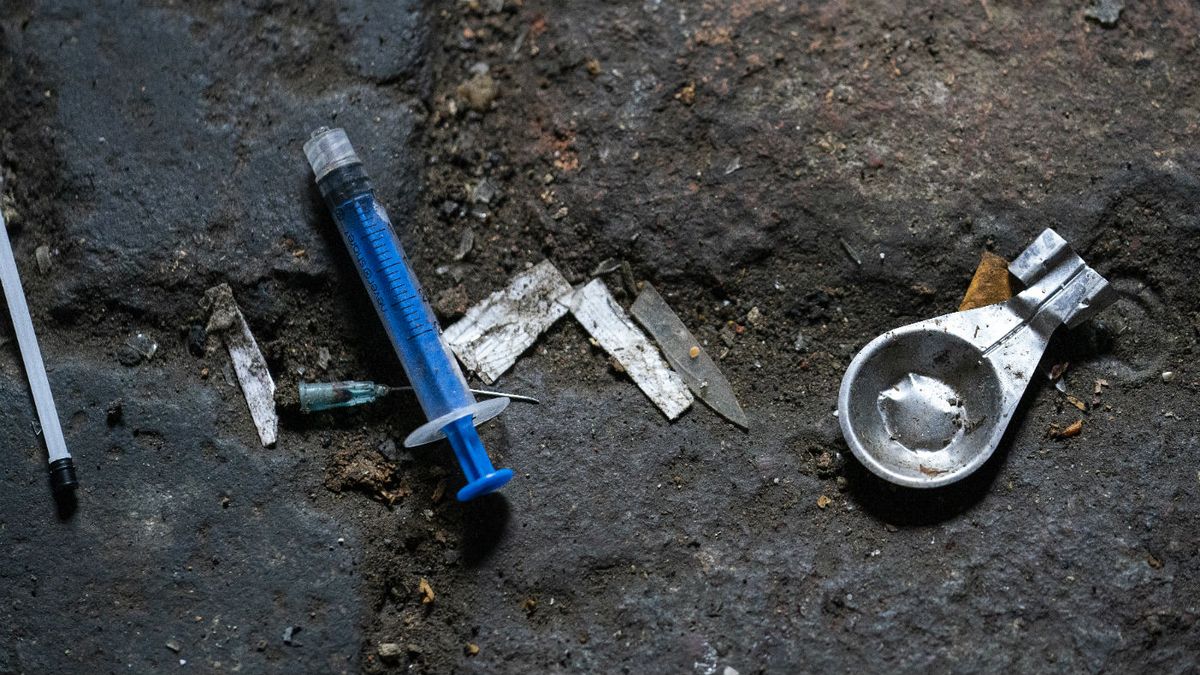
The human cost of drug overdoses extends far beyond the immediate tragedy. Understanding the experiences of those directly involved—the rescuers, the individuals in need, and their families—is crucial to crafting effective responses and fostering empathy. These perspectives provide invaluable insights into the complexities of this issue, highlighting the emotional and societal impacts that ripple through communities.
Rescuer Experiences
The act of intervening in a drug overdose crisis is profoundly impactful, both emotionally and psychologically. Rescuers often face the immediate challenge of life-threatening situations, needing to act swiftly and decisively to administer life-saving interventions. Furthermore, the potential for repeated exposure to these traumatic events can lead to compassion fatigue and secondary trauma.
- First responders, medical professionals, and volunteers often describe feeling a sense of responsibility and helplessness in the face of the crisis. The weight of witnessing the suffering of others and the knowledge that their efforts may not always be successful can be overwhelming.
- The emotional toll can manifest in various ways, including anxiety, depression, post-traumatic stress disorder (PTSD), and difficulty coping with the emotional aftermath.
- Support systems and training programs are crucial for helping rescuers process these experiences and maintain their well-being.
Experiences of Those in Need
The experience of an overdose is inherently traumatic, leaving individuals with profound psychological scars. The fear, panic, and potential for loss of control during an overdose can be debilitating. Recovery from an overdose often involves confronting the underlying issues that contributed to the crisis.
- Individuals experiencing an overdose may face significant emotional distress, ranging from feelings of shame and guilt to a profound sense of vulnerability and fear.
- The physical and psychological consequences of the overdose itself can be debilitating. The struggle to regain health and stability can be emotionally challenging.
- Seeking help can be difficult due to stigma and societal judgment. The fear of judgment and the social isolation that may follow can deter people from seeking the help they need.
Family Perspectives
The family members of individuals who have overdosed experience immense grief, loss, and uncertainty. The emotional turmoil is compounded by the fear of losing a loved one, the uncertainty of the future, and the struggle to cope with the trauma. Families often face immense pressure and isolation as they navigate the aftermath.
- Family members may grapple with feelings of helplessness, guilt, and anger as they grapple with the circumstances surrounding the overdose.
- The emotional burden on families can be immense. They may struggle with feelings of blame, grief, and uncertainty regarding the future.
- Family support systems are critical for navigating these challenging times. Access to counseling, support groups, and other resources can significantly aid families in their healing process.
Stigma and Discrimination
Stigma surrounding drug use and addiction can significantly impede individuals’ willingness to seek help. The fear of judgment, social ostracization, and potential legal consequences can deter people from seeking treatment or support. Breaking down these barriers is essential for fostering a culture of support and recovery.
- The stigma associated with drug use often discourages individuals from seeking help for fear of judgment or discrimination.
- This fear can manifest in various ways, such as avoiding treatment due to concern about being labeled or ostracized.
- Addressing the stigma and promoting understanding and compassion are critical steps in creating a more supportive environment for those struggling with substance use disorders.
Quotes on Individual Perspectives
“The fear of being judged was the biggest barrier to seeking help.”
“I felt so alone and ashamed after the overdose.”
“The support of my family was crucial in getting through this.”
“It’s important to remember that everyone deserves compassion and understanding.”
“The fear of stigma kept me from reaching out for help for a long time.”
Resource Allocation: Should We Save People Who Overdose Drugs
Allocating resources effectively for drug overdose rescue programs is crucial for maximizing impact and minimizing harm. The sheer number of overdoses necessitates a strategic approach that considers the various facets of prevention, treatment, and rescue, recognizing that these aren’t mutually exclusive but rather interconnected components of a comprehensive response. The optimal allocation must be data-driven, balancing immediate needs with long-term solutions to create a robust and sustainable system.A critical consideration is the varying cost-effectiveness of different intervention strategies.
A program focused solely on rescue, while vital for immediate survival, might not address the underlying causes of addiction. Conversely, investing heavily in prevention might not yield immediate results, but could significantly reduce future demand for rescue services. Therefore, a balanced approach, distributing resources strategically across prevention, treatment, and rescue, is paramount for long-term success.
Optimal Resource Allocation for Drug Overdose Rescue Programs
Different funding models for drug overdose rescue programs have varying potential impacts. Public funding, for example, allows for wider reach and potentially more comprehensive programs, while philanthropic funding may offer flexibility and rapid deployment in specific areas. Governmental support often provides the bulk of resources and may be subject to budgetary constraints and political priorities. Private sector involvement, while potentially limited by profit motives, can provide specialized expertise and resources.
Comparison of Funding Models
The impact of different funding models varies significantly. Public funding, though potentially subject to political pressures and budget fluctuations, can ensure widespread access to services. Philanthropic funding, on the other hand, can be crucial for rapid deployment and pilot programs, allowing for innovation and flexibility. Private sector involvement can provide specialized resources and expertise but may be constrained by profit considerations.
The debate around saving overdose victims is complex. It’s easy to focus on the immediate life-or-death situation, but often overlooked are the long-term challenges faced by families. For example, imagine the added pressures on a working mom juggling breastfeeding and navigating the complexities of the Affordable Care Act, as discussed in this insightful article about aca working moms breastfeeding.
Ultimately, the decision to save someone is deeply personal and involves weighing numerous factors, and likely involves considerations beyond just the individual’s immediate health needs.
Cost-Effectiveness Analysis of Intervention Strategies
Assessing the cost-effectiveness of various intervention strategies is essential for optimal resource allocation. Prevention programs, such as public awareness campaigns and harm reduction initiatives, aim to decrease the incidence of overdoses in the long term, but may require sustained funding and may not show immediate returns. Treatment programs, offering medical and psychological support to individuals struggling with addiction, can significantly reduce future overdose risks, though initial costs can be substantial.
Rescue programs, focused on immediate intervention and life-saving measures, are crucial for preventing fatalities but may need substantial infrastructure and trained personnel. A comprehensive approach, integrating prevention, treatment, and rescue, is crucial to maximize the overall impact and minimize long-term costs.
Trade-offs Between Prevention, Treatment, and Rescue
Resource allocation for drug overdose rescue programs requires careful consideration of the trade-offs between prevention, treatment, and rescue. Investing heavily in rescue services might not address the underlying causes of addiction, while prioritizing treatment could leave individuals without immediate life-saving intervention. An ideal approach would strike a balance, recognizing the interconnectedness of these three elements.
Table Comparing Costs and Benefits of Different Approaches
| Approach | Cost | Benefits |
|---|---|---|
| Prevention | Initial investment may be substantial, but long-term costs could be reduced significantly through fewer overdoses and reduced demand for rescue and treatment. | Reduces the incidence of overdose events, potentially decreasing overall healthcare costs, and improves public health. Examples include public education campaigns, harm reduction strategies, and early intervention programs. |
| Treatment | High initial costs associated with establishing and maintaining treatment facilities, and the cost of personnel. | Reduces the risk of future overdoses, promotes recovery, and improves overall public health. Examples include counseling, medication-assisted treatment, and support groups. |
| Rescue | Requires specialized personnel, equipment, and infrastructure (e.g., ambulances, trained responders). | Saves lives immediately and reduces mortality associated with overdoses. Examples include administering naloxone, emergency medical care, and immediate transport to a hospital. |
Cultural and Societal Influences
The attitudes surrounding drug overdose rescue are deeply intertwined with cultural norms and societal values. These factors shape not only individual responses but also the broader public health approach to this critical issue. Understanding these influences is crucial to developing effective interventions and promoting empathy and understanding.Cultural contexts significantly impact how individuals and communities perceive drug use and overdose.
Preconceived notions, stigma, and varying levels of access to resources can influence willingness to assist someone experiencing an overdose. These cultural perspectives often play a key role in determining the effectiveness of public health initiatives and the willingness of individuals to intervene.
Cultural Norms and Societal Values
Cultural norms dictate acceptable behaviors and beliefs. These norms influence societal attitudes towards drug use and overdose. In some cultures, drug use may be perceived as a personal failing, prompting a reluctance to intervene. Conversely, in other cultures, a strong sense of community responsibility might lead to greater willingness to provide assistance. These differences highlight the profound impact of cultural context on the approach to overdose rescue.
Media Representation
Media portrayal plays a significant role in shaping public perception. Negative stereotypes of drug users often reinforce existing prejudices, making intervention less likely. Conversely, accurate and empathetic portrayals can foster understanding and compassion, leading to more proactive responses. Media literacy initiatives can be crucial in mitigating the negative impact of biased portrayals.
Potential Biases and Prejudices, Should we save people who overdose drugs
Preconceived notions about drug users can lead to biased responses. These biases, often rooted in societal stereotypes, can significantly hinder the effectiveness of overdose rescue efforts. Recognizing and addressing these biases is essential to promoting equitable and effective responses.
Cultural Differences and Intervention Strategies
Cultural variations in beliefs about drug use and appropriate responses can affect the efficacy of intervention strategies. Strategies that are successful in one culture might not be as effective in another. A culturally sensitive approach is critical to ensure the effectiveness of interventions. For instance, a community-based approach tailored to specific cultural values may be more effective than a generalized strategy.
Comparative Analysis of Cultural Perspectives
Different cultures have diverse perspectives on drug use and overdose. In some cultures, drug use is often associated with criminality or moral failing, leading to social isolation and stigmatization. In other cultures, substance use may be viewed as a form of self-medication or spiritual practice. These diverse perspectives necessitate tailored approaches to intervention and prevention efforts. Understanding the historical, social, and economic factors influencing drug use in different cultures is crucial for effective prevention and intervention.
Outcome Summary
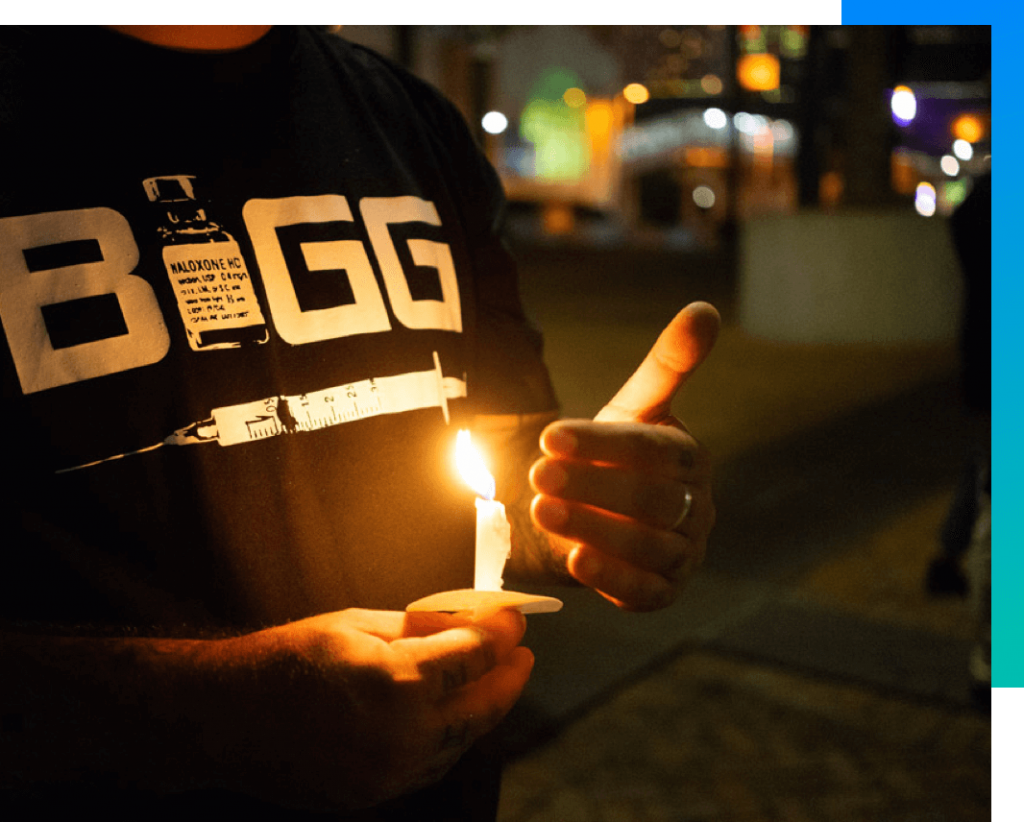
Ultimately, the decision of whether to save overdose victims involves a complex balancing act. While the desire to save lives is paramount, ethical considerations, public health impacts, practical constraints, and diverse perspectives must be carefully considered. A comprehensive approach requires thoughtful consideration of all facets of the issue, from prevention and treatment to the logistics of rescue. Ultimately, the goal is to develop effective and humane strategies that address the multifaceted problem of drug overdose while minimizing harm.

